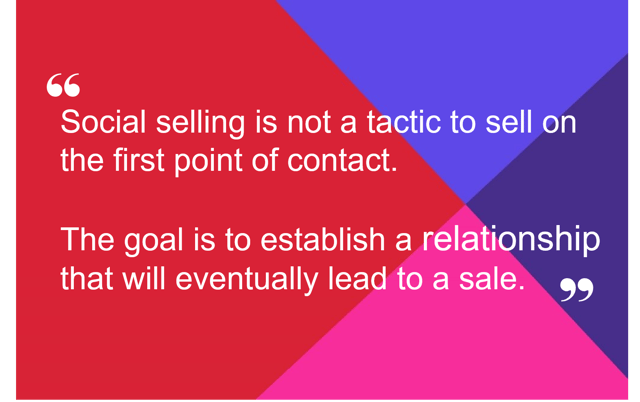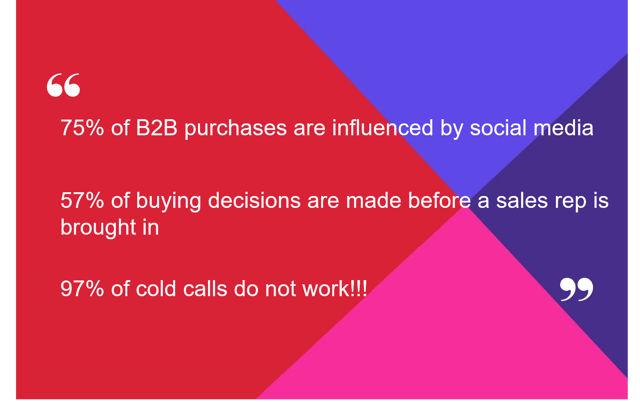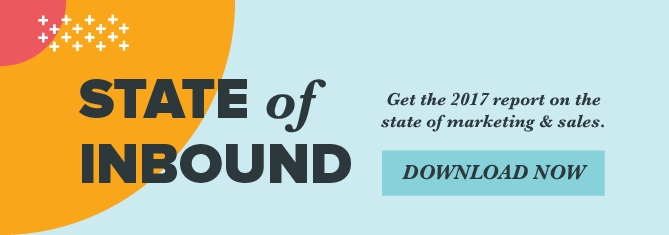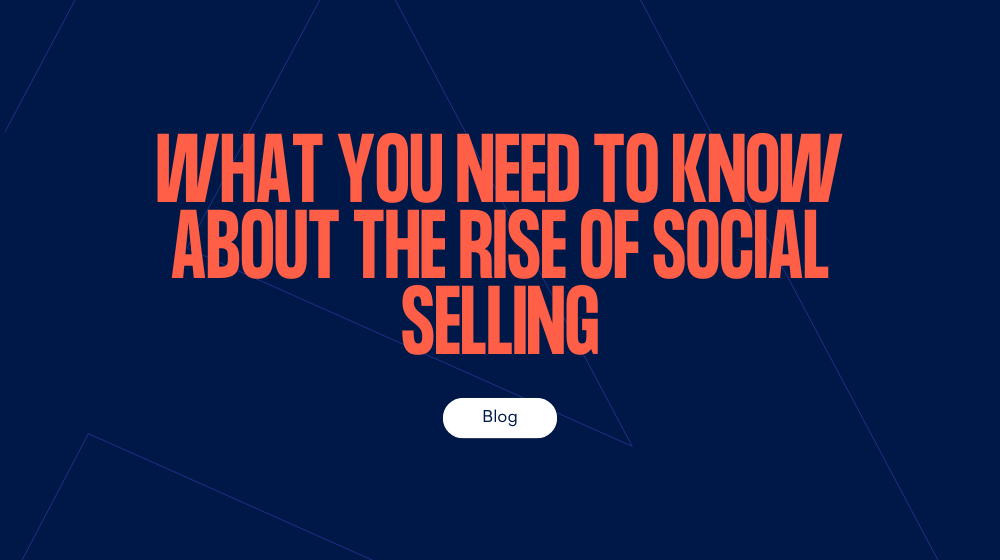The momentum of "social selling" is growing rapidly and it's important that sales people realise the importance of this relatively new sales tactic.
So what is social selling?
Is it making your fluffy social marketing messages more sales driven? Is it paying for advertising on social media platforms? Or is it all about closing deals over Twitter or even targeting prospects with relentless LinkedIn requests?Thankfully it is none of the above.
Social selling is when sales people use social media to interact directly with their ideal prospects. The aim of this is to cultivate one-to-one relationships and build rapport, rather than broadcasting one-to-many messages in the way social marketing does.

When a social seller comes to work they use social media to listen to the conversations, seek out opportunities where they can add value and build up a level of trust with each prospect. Living in a world where people openly share their thoughts, feelings and challenges in the public domain now gives the modern salesperson a greater understanding of the needs and wants of their potential customer. Being able to see your prospects in this light allows you to better qualify them, have more authentic interactions and ultimately convert more sales, shortening the sales cycle and improving your bottom line.
Here are the facts to back this up...
Every year, HubSpot, with whom we are partnered, conducts research to develop their State of Inbound Report. This year's edition found that social selling has become the third most important priority for sales teams, with 31% of those asked across EMEA saying it was their top priority. This has rapidly increased from ranking near the bottom in 2015's report.
The biggest challenges sales teams are still facing today are getting a response from prospects, closing deals and prospecting. With this, it's no wonder that social selling is increasingly becoming a more useful tactic, as it addresses these very issues. Prospecting on Facebook has increased from 9% to 12% year-on-year and doing business using messaging apps was found to be the only communication method to increase between 2016 to 2017.
This suggests that salespeople are continuing to focus on closing more deals and developing a "closing culture," where leads and potential customers take a priority over business operations, such as internal meetings (which may actually be unnecessary). Developing a closing culture that uses social selling puts the onus on the sales person to follow up with a lead immediately, rather than hours later when it might not be so hot. Moving towards this approach is certain to increase a company's conversion rates.
If you're not social selling now then you need to realise that you're not involving yourself when your prospect is in research mode. With 78% of consumers being influenced by social media when shopping online, you're missing a huge opportunity here.
Take note of the following stats...

This may be a relatively new concept to you, but your prospects are already engaged in social buying. According to LinkedIn, 76% of buyers are ready to have a social media conversion with providers, with 62% of B2B buyers connecting with salespeople who are sharing insights on relevant solutions to the problems they face.
So what are your next steps?
- Be human. The point of social selling is to build a relationship with your prospects. By interacting with them to provide value in a contextual way, you will not only set yourself apart from others but also begin to build trust.
- Listen and identify. Your prospects are online discussing what pain-points they're suffering from. By paying attention to topics in your industry where you can provide assistance, you can then reach out and connect.
- Provide value. Don't identify a problem and begin a sales pitch there and then. Instead, be interesting and helpful to establish yourself as an expert in your field and provide content at times that are right for your prospects.
- Build relationships. Respond and interact with your prospects when they post. Give them help when they need it most. Provide them with nuggets of information that will make their life easier and make them feel valued.

Remember, social selling is not a tactic for selling on the first point of contact. The goal is to establish a relationship that will eventually lead to a sale. If you can demonstrate all of the above to your prospects then it will be them who will be calling you for help and not you begging them to buy!
For more information around the current state of sales & marketing download Hubspot's State of Inbound 2017 report.




